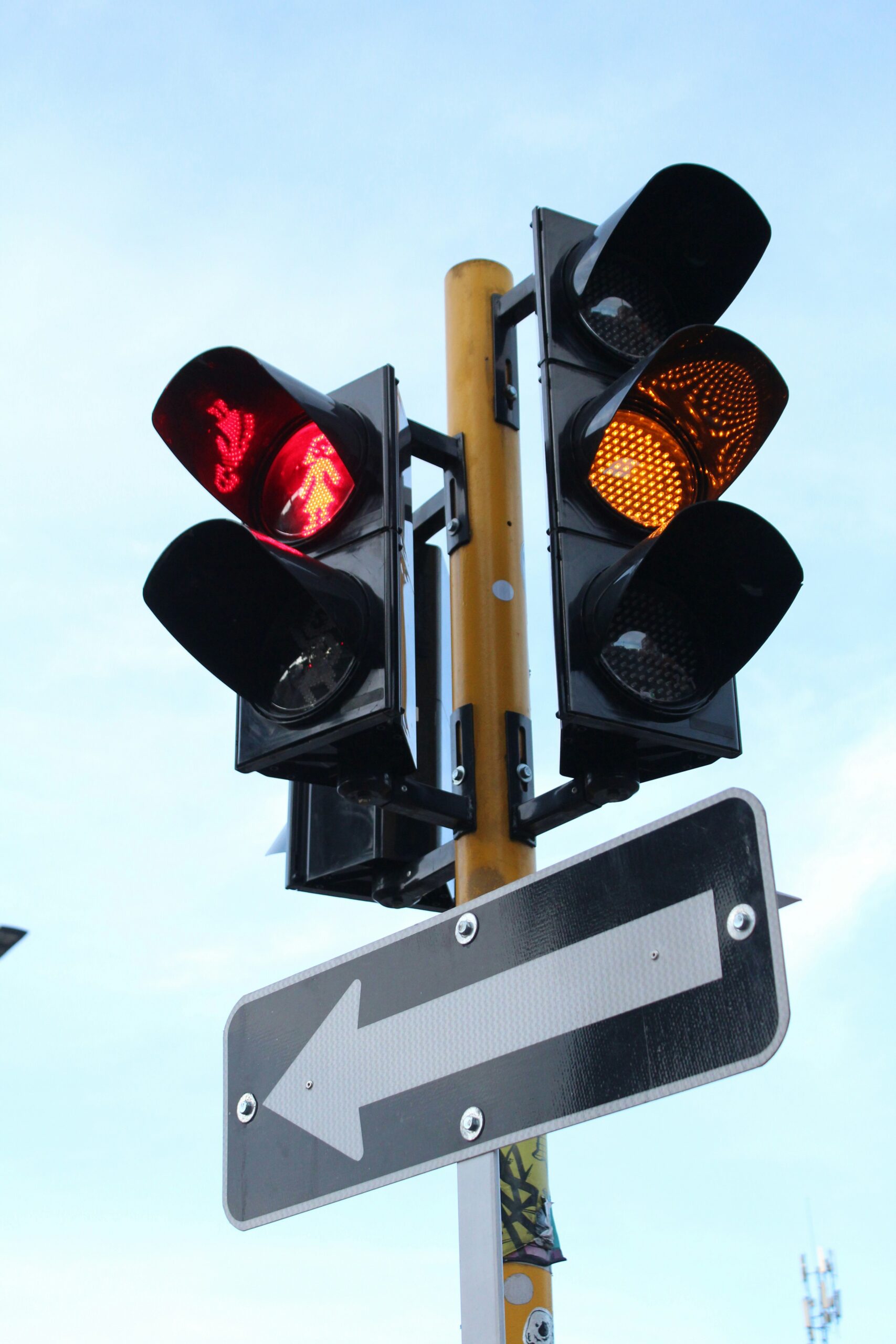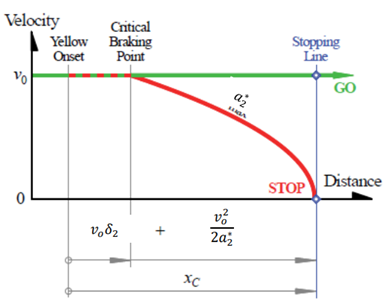November 18, 2024
 How long should a yellow light be? This is a question that has been researched extensively in the field of transportation and physics for over 60 years and yet, there still has not been a definitive answer.
How long should a yellow light be? This is a question that has been researched extensively in the field of transportation and physics for over 60 years and yet, there still has not been a definitive answer.
The yellow change interval (in simple terms, yellow light) is displayed at signalized intersections following a green light as a warning for drivers that the green has ended and a red will soon be displayed to transfer right-of-way. In many jurisdictions in the United States, a red clearance interval also follows the yellow light to provide additional time before the right-of-way is granted to a conflicting movement.
Why Does Yellow Light Duration Matter?
Determining the appropriate duration of a yellow light is key at signalized intersections, because red light running is a leading cause of severe crashes at these intersections. At a minimum, the length of a yellow light should be long enough to provide sufficient time for drivers to safely cross the stop bar if they are unable to stop when the yellow light first appears. If timed too short, drivers may not have enough time to do this, increasing the risk of red light running or other unsafe movements; however, longer durations can reduce intersection capacity, which could also encourage drivers to run a red light, especially if they are familiar with the intersection (although literature is not definite on this issue).
The Kinematic Model

Velocity versus Distance in Gazis, Herman, and Maradudin (GHM) Derivation | Source: ITE 2020 Recommended Practice
One of the most influential studies on this issue, “The Problem of the Amber Signal Light in Traffic Flow,” was conducted in November 1959 by Denos Gazis, Robert Herman, and Alexei Maradudin. These researchers developed an analytical solution (also known as the kinematic model or GHM model) to estimate minimum yellow duration by considering the physics of stopping behavior. They assumed a constant approach speed, a constant deceleration, and a constant perception-reaction time to calculate minimum yellow duration. In their paper, the authors were clear that the objective of their research was not to provide national guidance for practitioners, but to provide insights into the problem of determining the proper duration of yellow duration.
Albeit its limitations, most agencies today use some form of the kinematic model to determine yellow light duration. However, the use of this model comes with practical issues, because the kinematic model was derived for through vehicles and not for turning vehicles. The model also assumes certain driving behavior characteristics, noted above, that may not always be realistic.
The Extended Kinematic Equation
To address some of the shortcomings of the kinematic model, the Institute of Transportation Engineers (ITE) introduced a new equation, known as the Extended Kinematic Equation (EKE), in 2020. The EKE is an advancement of the previous kinematic model that takes into account the differences between turning vehicles and through vehicles. However, it has also raised its share of impracticalities, generating the following concerns among practitioners and researchers:
- The yellow duration for left-turn movements (and right turns where right turns are protected) based on the new ITE information are longer than the accepted limits some local agencies use.
- The calculated yellow duration sometimes conflicts with the Manual on Uniform Traffic Control Devices (MUTCD), which states the yellow duration should have a minimum duration of 3 seconds and a maximum duration of 6 seconds.
- The EKE assumes that turning drivers maintain their approach speed during the perception-reaction time. This assumption is questionable and would benefit from further research because, anecdotally, it is understood that turning drivers start decelerating to the intersection entry speed (i.e., turning speed) well before the onset of the yellow indication and use a much gentler deceleration than what is assumed in the EKE while slowing down from intersection approach speed to intersection entry speed.
The Next Step in Yellow Light Research
To address these challenges, the Federal Highway Administration (FHWA) is leading a research effort along with more than 20 agencies, ranging from State Departments of Transportations to local jurisdictions. The objective of this study is to provide a forum for participants and interested observers to collaboratively identify and pursue research needs that help us better understand how humans interact with yellow and red clearance intervals. The findings of this study will clarify existing assumptions and provide supplemental procedures and methodologies for calculating appropriate yellow and red clearance durations.
Kittelson, along with Leidos, Iowa State University, the University of Pittsburgh, and the University of Texas at Arlington, is working with FHWA to perform several investigations across the following four research areas:
1) Safety risk function: We’re exploring how and why safety risk changes as a function of yellow and red clearance duration, and the underlying reasons for these changes, by observing drivers’ decision-making behavior and analyzing crashes. The studies under this investigation will research the effects of turning versus through movements and long yellow light durations to determine whether the approach speed, deceleration, and perception-reaction time assumptions in the EKE are reasonable.
2) Surrogate safety measures for yellow and red clearance field evaluation: We’re identifying surrogate safety measures (critical events that are highly correlated to risk of collisions) that can quickly indicate whether an intersection’s yellow and red clearance durations are operating within an acceptable range. These surrogate measures can act as red flags, prompting further investigation or adjustments.
3) Efficiency cost function: We’re investigating how intersection efficiency changes with varying yellow and red clearance durations.
4) Alternative red-clearance interval schemes: We’re exploring the feasibility of implementing alternative red-clearance interval schemes using “pairwise conflict” that can substantially improve efficiency for certain intersection types.
We look forward to sharing the outcomes of this research, with the ultimate goal of improving the safe transfer of right-of-way at signalized intersections. If you are interested in this subject and would like to learn more, please feel free to contact us!
